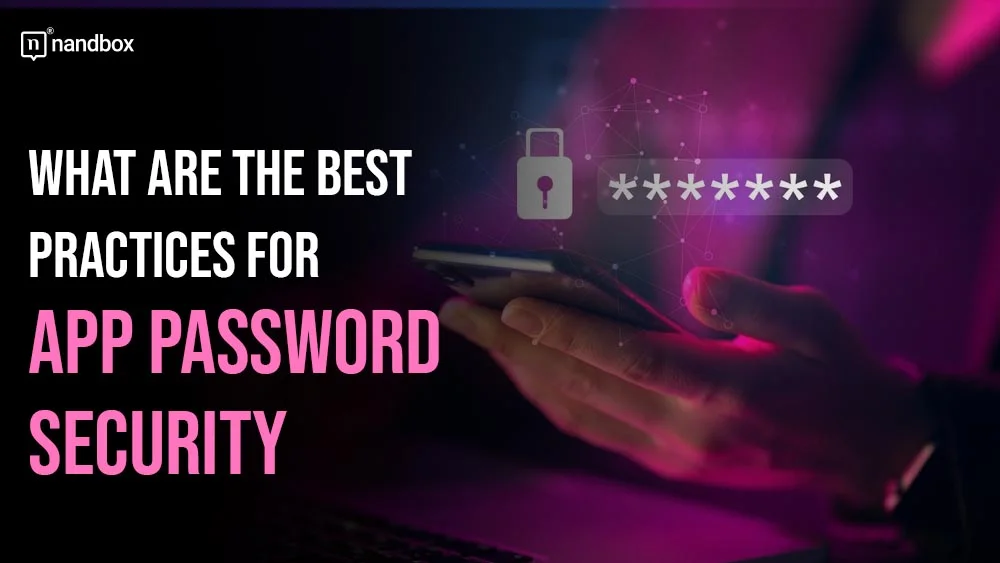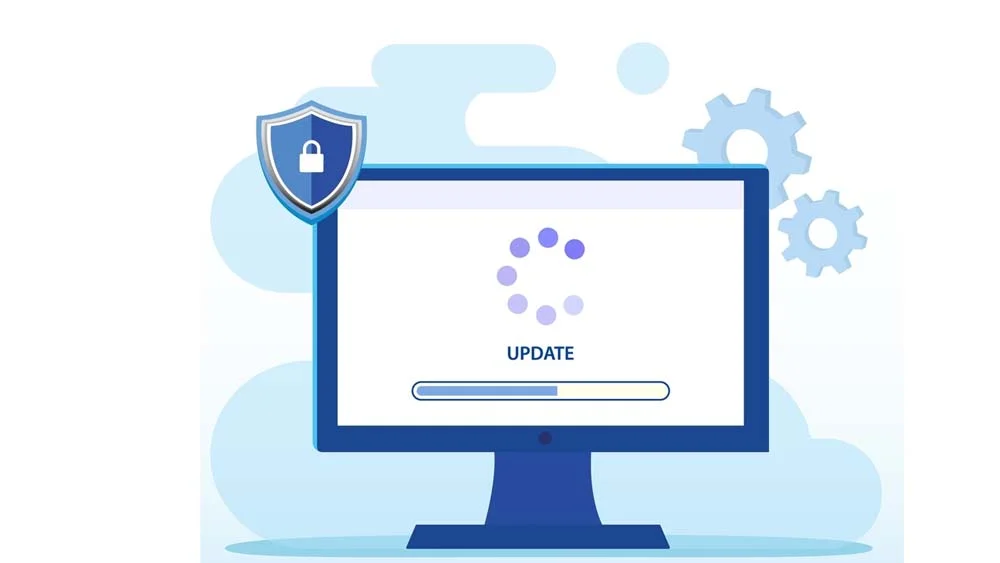The world is going through a lot of new technological advancements that are facilitating life for us and making us feel more enhanced than ever. But with these advancements, one has to be careful of what they might encounter from security challenges. That is why I dedicated this comprehensive guide to app password security.
That is because apps store a wealth of sensitive information. There are apps like RemotePass that ask for your bank account information in addition to your ID number in order to create a freelancing contract for you and help you receive money. If an app such as that got hacked or cyberattacked, this type of sensitive information can get leaked and misused. I guess no one would want to have their banking information leaked or even known by anyone else other than themselves. And that is why app creators should care with every single cell in their bodies about app security passwords and how they can provide the best authentication and protection for their users.
That is because some mistakes cannot be afforded, and if you’re up to taking the challenge of developing an app, then by all means, be my guest. But in order to do so, you’ll have to own up to the fact that you will be responsible for creating an app that users may upload sensitive information to, like a credit card number, banking info, ID number, etc. In this guide, we will unfold some of the layers that you should get to peel in order to understand more about app security passwords and how to efficiently create them without any hassles. Securing passwords is not just a technical necessity. This is a promise to your users that their privacy matters. So, how do you make that promise a reality? Let’s delve into the best practices that every developer should adopt.
App Password Security: Encourage Strong Password Policies
You know those apps that keep refusing the password that you keep on entering? You know how they frustrate you when they ask for special characters along with numbers and uppercase letters? I for sure got frustrated by one or two when going through them. However, it is safe to say that these apps with their profile development methods are the best. But why? I know that complicated was never the answer to things. However, there are some elements that always break the rules and help you see things from a new perspective. There was a study that was on Wikipedia that showed the top 20 worst passwords that people use.
These passwords contained examples like “123456” and, of course, the common “qwerty.” Now I know that sometimes people want something easy for them to remember; however, opting for a weak password is something that you might regret later when you find that someone accessed your profile and took over it. As a user, I advise you to create a strong password that you can memorize easily. For app developers, I advise you to carry the responsibility of guiding users toward creating a stronger password. Strong passwords typically combine uppercase and lowercase letters, numbers, and special characters. And typically, they should be at least 12 characters long to withstand brute-force attacks. However, there will be people or users who will ignore your strong password “suggestion,” and this is when a suggestion is definitely not enough.
If you’re an app developer, you can include a password strength meter that provides users with feedback regarding the password that they entered and shows them that they need a stronger one for their password to be approved by your app. Beyond this, educating users about the dangers of reusing passwords is critical. Reused credentials are a common target for hackers in credential stuffing attacks, where stolen passwords from one breach are used to access multiple accounts.
Implement Two-Factor Authentication (2FA)
I know that you may have encountered a platform, website, or even an app that tells you to implement two-factor authentication as a user. If you’re familiar with what that is, I salute you. If not, let me tell you in the context of being a user or an app owner.
Two-factor authentication (2FA) is one of the most effective ways to enhance app security. But why is it so crucial? To put it simply, it adds an extra layer of protection beyond the password. Even if a user’s password is compromised, a second factor, which is something they own, like a phone, or something they are, like a fingerprint, prevents unauthorized access. Picture this scenario: A user logs into their banking app, enters their password, and immediately receives a one-time code via text message. Without this code, no one can gain access, even if the password is leaked. This is the power of 2FA. It significantly reduces the likelihood of successful attacks, such as phishing or credential stuffing.
Many leading apps, like Google and PayPal, have adopted 2FA, setting a high standard for security. Options for implementing 2FA in your app include SMS-based codes, authentication apps like Google Authenticator, or even biometric verification. While SMS codes are convenient, they are not entirely foolproof due to risks like SIM-swapping. Authentication apps or biometrics offer stronger alternatives, providing both security and user convenience.
App Password Security: Regularly Update Security Features
Cybersecurity threats evolve rapidly, and staying ahead of attackers requires constant vigilance. When was the last time you reviewed your app’s security features? Regular updates are crucial for addressing vulnerabilities, enhancing existing protections, and keeping pace with emerging threats.
One of the most important steps is patching known security flaws. For example, when the Heartbleed vulnerability in OpenSSL was discovered in 2014, countless organizations quickly updated their systems to prevent exploitation. Without such updates, even minor flaws can become major security risks.
Another key practice is upgrading encryption algorithms as stronger ones become available. What worked five years ago may no longer be sufficient today. Conducting regular security audits and penetration tests can help identify weak points in your app, ensuring that you address them before they can be exploited. Security updates also send a message to your users: You are committed to their safety. In a world where cybersecurity concerns are ever-present, this commitment can set your app apart from competitors.
Monitor for Suspicious Activity
Proactive monitoring is essential for detecting and responding to potential security threats. But how do you know if your app is under attack? By continuously monitoring for suspicious activity, you can identify issues before they escalate into full-blown breaches.
Key indicators of suspicious activity include multiple failed login attempts, unusual login locations, or account access from unfamiliar devices. When such activities are detected, your app can respond by locking the account, sending alerts to the user, or requiring additional verification steps. For instance, many email platforms notify users when their account is accessed from a new device or location. This immediate feedback empowers users to take action, such as changing their password or contacting support. Modern tools, such as intrusion detection systems and real-time analytics, can make monitoring more effective. When you stay vigilant and responsive, you demonstrate to your users that their security is a top priority.
App Password Security: Leverage Biometric Authentication
Biometric authentication has become a game-changer in app security, combining convenience with advanced protection. Unlike traditional passwords, biometric data. Such as fingerprints, facial recognition, or even voice patterns. These are all unique to each individual and nearly impossible to replicate.
Apps like Apple Pay and WhatsApp have embraced biometric authentication to provide users with a seamless login experience. Imagine opening an app with a quick fingerprint scan instead of typing a complex password. This not only saves time but also reduces the risk of password-related breaches. However, biometrics should complement, not replace, other security measures. For example, pairing biometric authentication with encrypted password storage creates a multi-layered defense strategy. While biometrics offer incredible security, they also require careful implementation to ensure that biometric data is stored and processed securely.
Final Thoughts!
Password security is the foundation of a safe and trustworthy app. When you adopt these best practices, such as enforcing strong password policies, integrating 2FA, securing password storage with encryption, and leveraging biometrics, you can protect your users from evolving cyber threats. These measures are not just technical safeguards; they are a commitment to your users’ privacy and trust.
Are you ready to build a secure app without the complexity of coding? With nandbox’s native no-code app builder, you can create powerful, secure apps with ease. From robust authentication features to seamless user management, nandbox equips you with all the tools you need to prioritize security and deliver an exceptional experience. Start your journey today and let nandbox help you build the secure app your users deserve.





